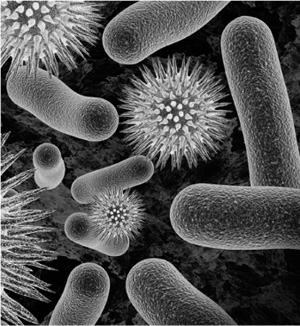Bacteria, Viruses, and ProtistsHistorical Interest in Bacteria |
When was the “golden age” of microbiology? |
Many scientific historians believe the “golden age” of microbiology began in 1857 with the work of French chemist Louis Pasteur (1822–1895) and lasted about sixty years. During this time, researchers identified the specific microorganisms responsible for numerous infectious diseases. For example, English surgeon Joseph Lister (1827–1912) treated surgical wounds with a phenol solution that eventually led to the advent of aseptic surgery; German physician Paul Ehrlich (1854–1915) added to the theory of immunity by synthesizing an arsenic compound that was effective in treating syphilis in humans; in 1884, Russian microbiologist Elie Metchnikoff (1845–1916), an associate of Pasteur, published a report on phagocytosis—the defensive process in which the body’s white blood cells engulf and destroy microorganisms; and in 1897, Japanese physician Masaki Ogata (c. 1864–c. 1919) reported that rat fleas transmitted bubonic plague, ending the centuries-old mystery of how plague was transmitted.

There are millions of species of bacteria on our planet, but they weren’t discovered until the seventeenth century, when scientists first peered into drops of water using magnifying lenses.
